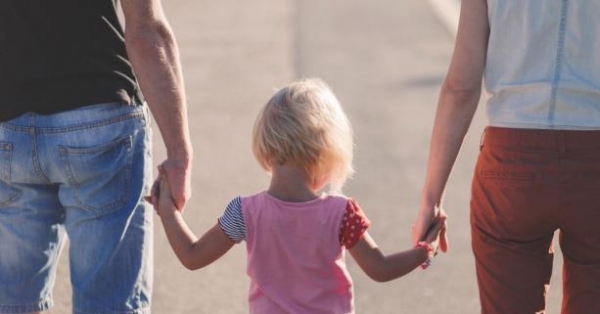Last year, 326 children in our region received the status of an orphan and a child deprived of parental care.
Last year, 74 children from these categories were adopted in the Lviv region. This is the best adoption rate since 2008. For comparison, in 2022, 43 children were adopted in the region.
The results of the situation with the placement of orphans and children without parental care in the region were summed up during a briefing at the Official Media Centre at the Lviv Regional State Administration.
As of the end of 2023, 2,188 orphans and children without parental care were registered with the services for children in Lviv Oblast. Over 12 months of last year, 326 children received this status.
“Children who have been left without parental care due to certain life circumstances should receive sufficient support from the state. At the regional level, we are making sure that more and more family-type children’s homes appear in the Lviv region, as this is a modern alternative to the old Soviet boarding schools, which should be forgotten long ago. Last year, under the regional programme, with co-financing from local budgets, we purchased apartments for 37 orphans. The region is also developing foster families as a form of childcare. Anyone who is ready to take responsibility for a child can undergo training as an adoptive parent. In this way, Lviv region shows a vivid example of successful care for children from these categories, because it is our duty,” said Ivan Sobko, deputy head of the Lviv Regional Administrative Department.
“There are 44 family-type children’s homes in our region, two of which were opened last year. In addition, there are 74 foster families with 436 children and 11 foster families with 21 children in Lviv Oblast.
“Our task is to ensure the right to a family for children of all ages. To this end, family-type children’s homes are being created in the region. Over the past year, FTOs appeared in the Brody and Zhovtanets communities, where a total of 8 children were placed. Last year, 9 foster families were also created, where 19 children were placed. Children from other regions continue to arrive in our region. There are 299 children in 17 children’s institutions in the region who have moved to us as part of organised groups or on their own,” said Volodymyr Lys, head of the Children’s Service of the Lviv Regional State Administration.
“The following internally displaced children are living in our region:
7 family-type orphanages with 50 orphans and children deprived of parental care;
4 foster families with 9 children from these categories;
70 foster care families with 102 children.
Important! Children left without parental care during martial law can be placed in foster families or family-type children’s homes on a temporary basis. The procedure for placing orphans and children deprived of parental care under the care of relatives is also simplified. There is no mention of adoption.
As of today, there are 167 couples in the Lviv region who are candidates for adoption. Since the beginning of 2023, the Lviv Regional Centre of Social Services has organised 11 trainings for candidates for foster parents, adoptive parents, guardians and foster parents, which covered 287 people. The training is free of charge and lasts for a week.
“During such trainings, candidates are taught how to establish contact with a child, because in most cases, such children have no experience in communication and are not sufficiently socialised. That is why psychologists, doctors, and social workers work with potential adoptive parents. People who have expressed a desire to adopt a child apply to the Children’s Service and provide the necessary documents: a certificate of family composition, income, and no criminal record,” said Yaroslav Bordiyan, head of the Lviv Regional Centre for Social Services.
As a result, the candidates who completed the training received certificates and recommendations for their inclusion in the electronic database of potential foster parents. The next training will take place in March this year.
For reference:
A family-type children’s home is a separate family created at the request of a married couple or an unmarried individual, in which at least 5 orphans and children deprived of parental care are placed for upbringing and cohabitation. The total number of children in a family-type children’s home should not exceed 10, including relatives
A foster family is a temporary form of placement of a child in a family where the period of stay cannot exceed three months (up to six months if necessary). The purpose of foster care is to ensure the protection of the rights of a child who, due to difficult life circumstances, is temporarily unable to live with his or her parents/legal representatives, and to provide services to the child and his or her family aimed at returning to the family in the best interests of the child.
Foster family – a family or an individual who is not married, who voluntarily took one to four orphans and children deprived of parental care for upbringing and cohabitation for a fee.

